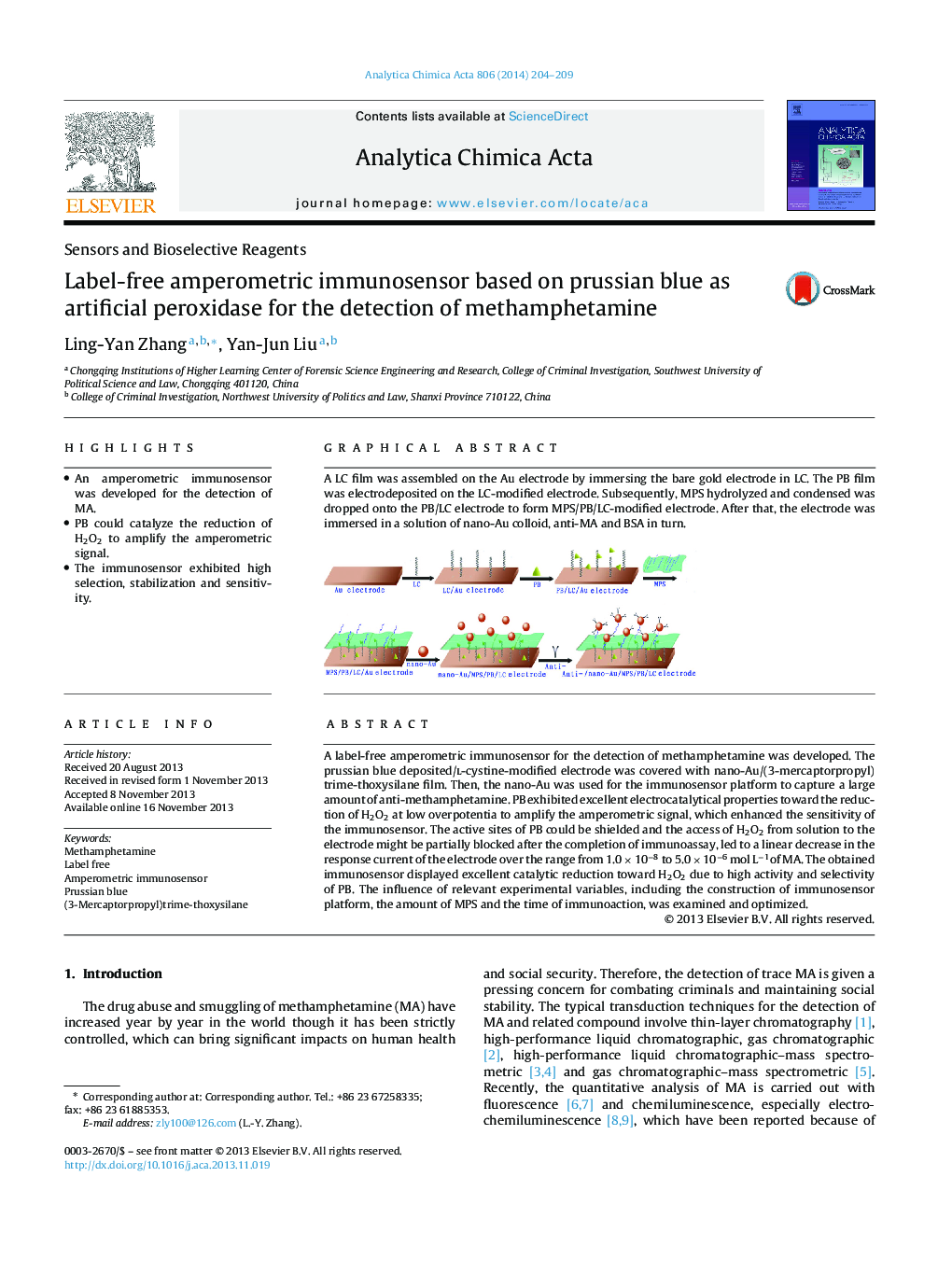| Article ID | Journal | Published Year | Pages | File Type |
|---|---|---|---|---|
| 1164983 | Analytica Chimica Acta | 2014 | 6 Pages |
•An amperometric immunosensor was developed for the detection of MA.•PB could catalyze the reduction of H2O2 to amplify the amperometric signal.•The immunosensor exhibited high selection, stabilization and sensitivity.
A label-free amperometric immunosensor for the detection of methamphetamine was developed. The prussian blue deposited/l-cystine-modified electrode was covered with nano-Au/(3-mercaptorpropyl) trime-thoxysilane film. Then, the nano-Au was used for the immunosensor platform to capture a large amount of anti-methamphetamine. PB exhibited excellent electrocatalytical properties toward the reduction of H2O2 at low overpotentia to amplify the amperometric signal, which enhanced the sensitivity of the immunosensor. The active sites of PB could be shielded and the access of H2O2 from solution to the electrode might be partially blocked after the completion of immunoassay, led to a linear decrease in the response current of the electrode over the range from 1.0 × 10−8 to 5.0 × 10−6 mol L−1of MA. The obtained immunosensor displayed excellent catalytic reduction toward H2O2 due to high activity and selectivity of PB. The influence of relevant experimental variables, including the construction of immunosensor platform, the amount of MPS and the time of immunoaction, was examined and optimized.
Graphical abstractA LC film was assembled on the Au electrode by immersing the bare gold electrode in LC. The PB film was electrodeposited on the LC-modified electrode. Subsequently, MPS hydrolyzed and condensed was dropped onto the PB/LC electrode to form MPS/PB/LC-modified electrode. After that, the electrode was immersed in a solution of nano-Au colloid, anti-MA and BSA in turn.Figure optionsDownload full-size imageDownload as PowerPoint slide
